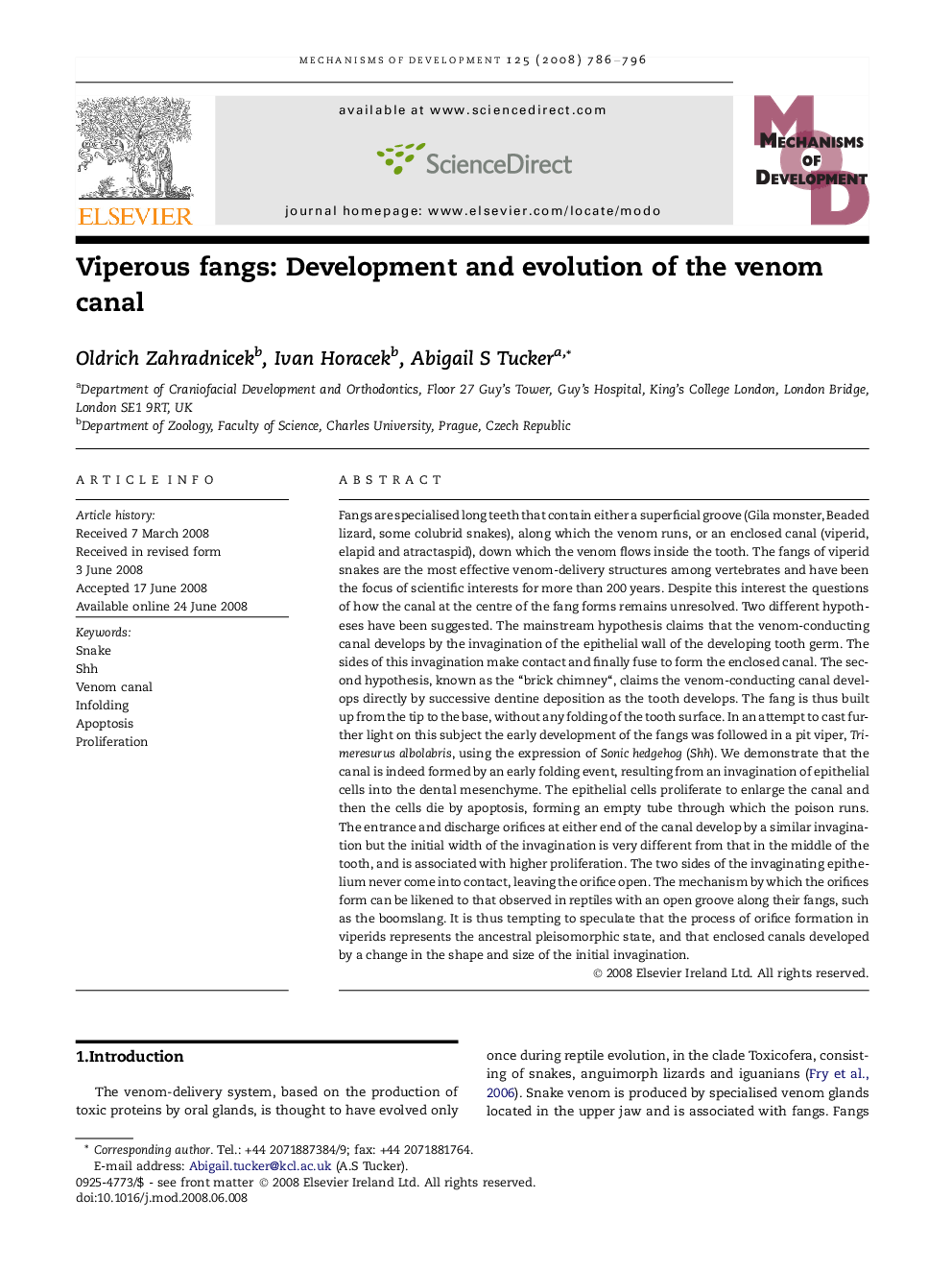| کد مقاله | کد نشریه | سال انتشار | مقاله انگلیسی | نسخه تمام متن |
|---|---|---|---|---|
| 2194754 | 1550609 | 2008 | 11 صفحه PDF | دانلود رایگان |

Fangs are specialised long teeth that contain either a superficial groove (Gila monster, Beaded lizard, some colubrid snakes), along which the venom runs, or an enclosed canal (viperid, elapid and atractaspid), down which the venom flows inside the tooth. The fangs of viperid snakes are the most effective venom-delivery structures among vertebrates and have been the focus of scientific interests for more than 200 years. Despite this interest the questions of how the canal at the centre of the fang forms remains unresolved. Two different hypotheses have been suggested. The mainstream hypothesis claims that the venom-conducting canal develops by the invagination of the epithelial wall of the developing tooth germ. The sides of this invagination make contact and finally fuse to form the enclosed canal. The second hypothesis, known as the “brick chimney“, claims the venom-conducting canal develops directly by successive dentine deposition as the tooth develops. The fang is thus built up from the tip to the base, without any folding of the tooth surface. In an attempt to cast further light on this subject the early development of the fangs was followed in a pit viper, Trimeresurus albolabris, using the expression of Sonic hedgehog (Shh). We demonstrate that the canal is indeed formed by an early folding event, resulting from an invagination of epithelial cells into the dental mesenchyme. The epithelial cells proliferate to enlarge the canal and then the cells die by apoptosis, forming an empty tube through which the poison runs. The entrance and discharge orifices at either end of the canal develop by a similar invagination but the initial width of the invagination is very different from that in the middle of the tooth, and is associated with higher proliferation. The two sides of the invaginating epithelium never come into contact, leaving the orifice open. The mechanism by which the orifices form can be likened to that observed in reptiles with an open groove along their fangs, such as the boomslang. It is thus tempting to speculate that the process of orifice formation in viperids represents the ancestral pleisomorphic state, and that enclosed canals developed by a change in the shape and size of the initial invagination.
Journal: Mechanisms of Development - Volume 125, Issues 9–10, September–October 2008, Pages 786–796